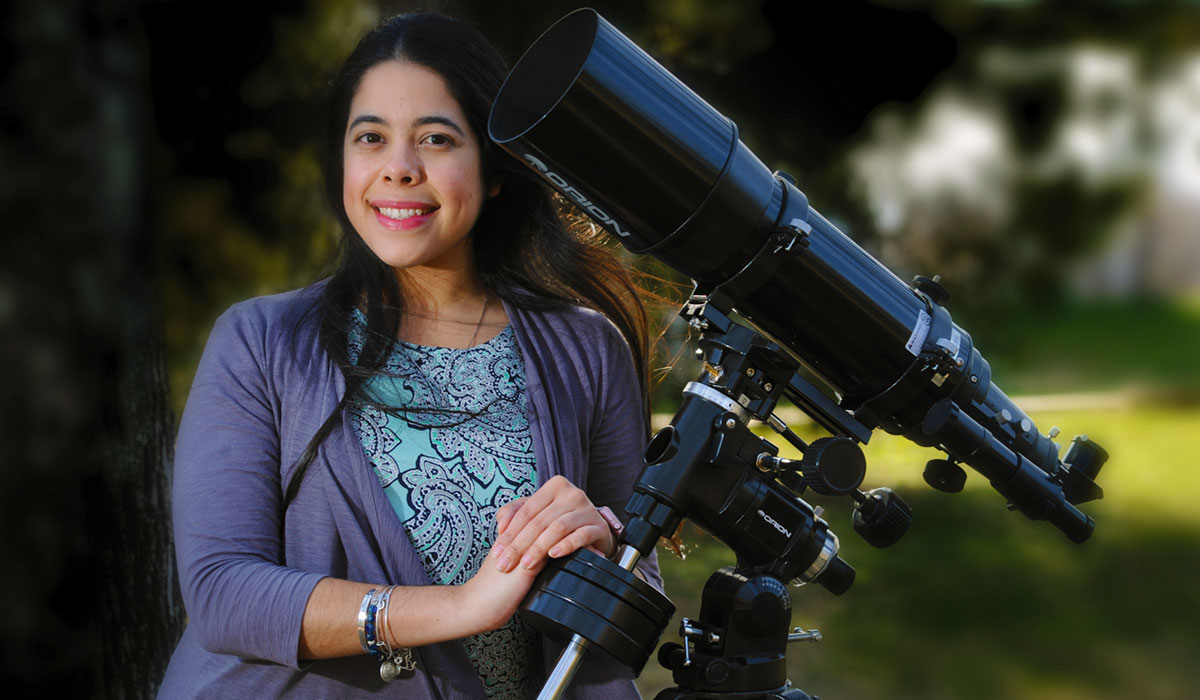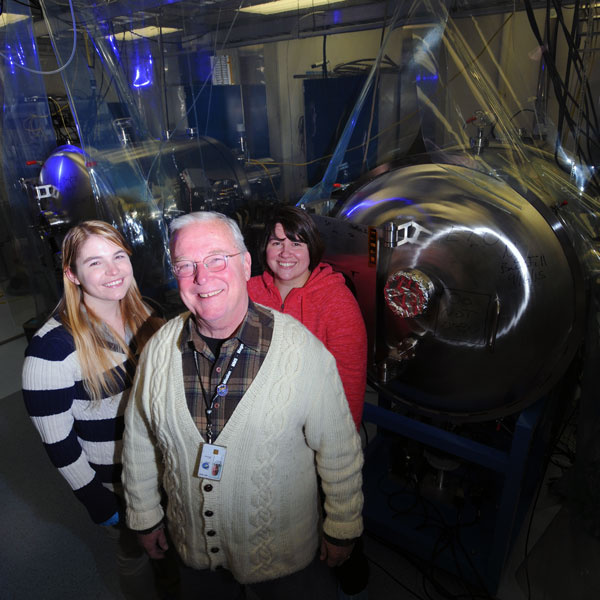

Amy Soto, a doctoral student in the Department of Physics, has always loved looking up at the stars. When she was growing up in Hartford, Conn., she spent family vacations visiting the Smithsonian National Air and Space Museum in Washington, D.C. In 1993, she witnessed a shuttle launch at the Kennedy Space Center in Cape Canaveral, Fla., with her family.
“I remember thinking how cool it would be to go into outer space,” Soto said. “And who doesn’t love looking up at the sky and gazing at the stars and wondering what’s out there?”
So in May 2014, when Soto had the opportunity to do research work at the Nordic Optical Telescope in the Canary Islands of Spain, she jumped at the chance. The telescope is located at Roque de los Muchachos Observatory in La Palma, one of the best locations for optical and infrared astronomy in the Northern Hemisphere.
“It was the darkest place I had ever been and you can see the bands of the Milky Way across the sky at night,” Soto said.

The connections she has made at NASA’s Goddard Space Flight Center in Greenbelt, Md., made her trip possible.
At NASA Goddard, Soto studies galaxy evolution alongside world-class astrophysicists, including her advisor, Catholic University physics professor Duilia de Mello.
Last year, Soto was part of a team that captured the most colorful deep image of the universe, a composite of several exposures taken by Hubble telescope cameras. Discoveries with this image will add missing pieces to the puzzle of galaxy formation, including details on how the Milky Way came to exist.
Soto is one of many Catholic University students currently doing research at NASA Goddard through the University’s Institute for Astrophysics and Computational Science (IACS), where nearly 50 University researchers study a variety of topics related to astrophysics, planetary science, and heliophysics.
Thirteen doctoral physics students currently work at the facility. More students, including undergraduates, have worked there as summer interns.
Approximately half of the students researching at NASA Goddard spend their time working in the astrophysics division, where they study stars, galaxies, nebulae, and other objects in the universe.
The other half study space weather at the Center for Excellence in the Physics of the Heliosphere and the Sun, managed by Catholic University through a cooperative agreement with NASA Goddard’s Heliophysics Science Division. Space weather can include solar flares, solar storms, and coronal mass ejections — large bubbles of gas and magnetic field that occasionally erupt from the sun.

“Space weather is a very violent and turbulent process and it’s becoming more important as technology develops,” said Vadim Uritsky, an IACS researcher and associate professor of physics who studies space.
Last year, Uritsky took a group of honors students on a backstage tour of NASA Goddard. By introducing more students to NASA research, he hopes to show them how physics is ever-changing.
“I always emphasize that this is the cutting edge of physics and that the cutting edge means there are many things we do not yet understand.”
This article is adapted from a full-length feature story that appeared in the spring 2016 issue of The Catholic University of America Magazine.